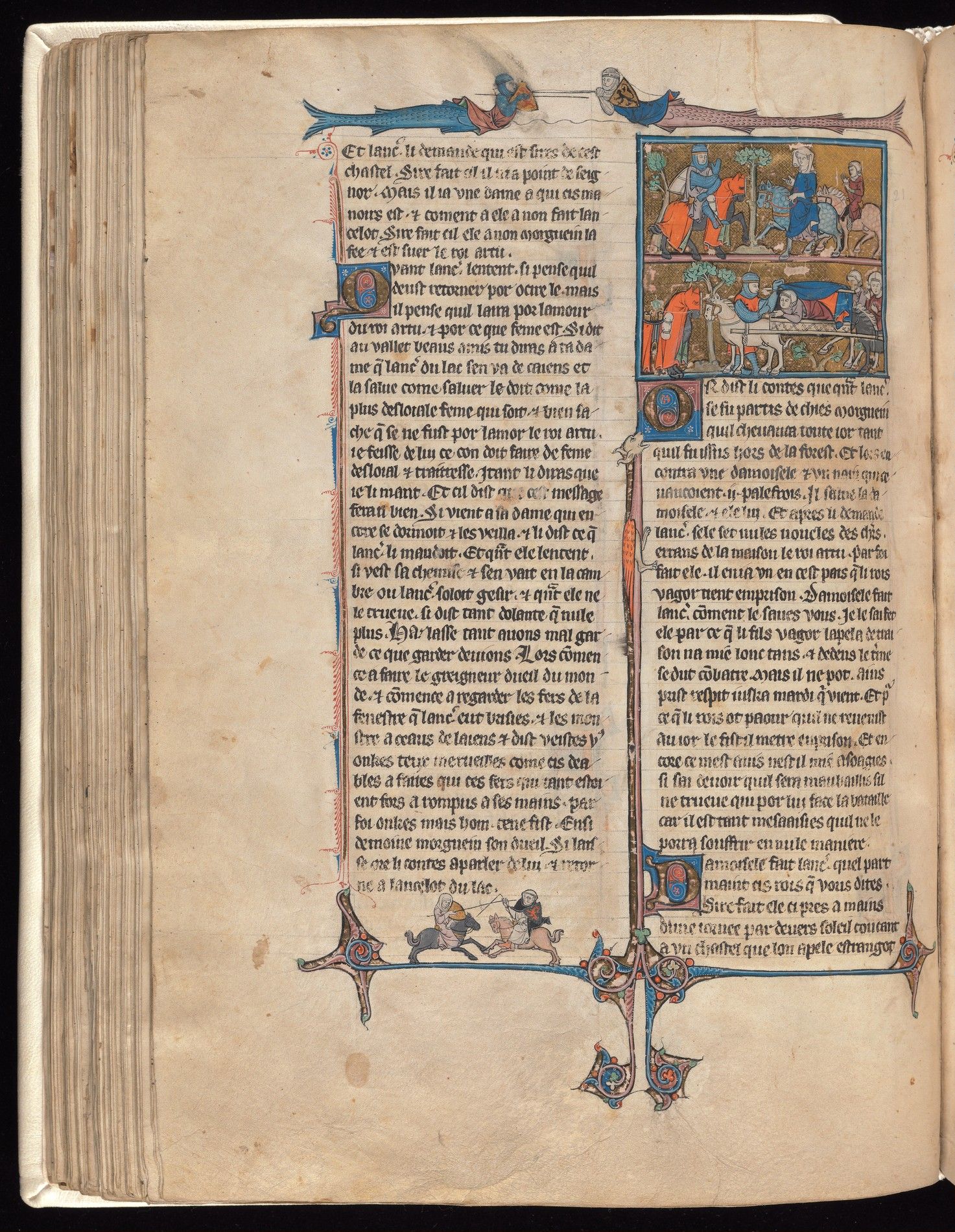Something Fishy in the Margins
Posted by: MFLC Team 10 years, 12 months ago
By Dirk Schoenaers
There is something fishy about the marginal decoration of Yale, Beinecke Rare Book and Manuscript Library, MS 229, folio 100v. According to Alison Stones' Survey of Gothic Manuscripts, this well-known codex with the Agravain, Queste del Saint Graal and Mort le roi Artu was illustrated in the diocese of Thérouanne, c. 1290 by at least two artists, a main hand and his (or her?) assistant (Stones 2013, 70).
In the upper margin of f. 100v., apparently for no obvious reason, one of the artists has painted a joust between two merman knights. Following the description of similar arms in the Psalter of Guy of Dampierre in Brussels, KBR, MS 10607 by C. Gaspar and F. Lyna in Les principaux manuscrits de la Bibliotheque Royale de Belgique, the Beinecke catalogue identifies the coat of arms on the shield of the left merman as 'Bergen'. However, given that the coat is d'or au lion rampant de gueules nothing appears to prohibit an identification as 'Holland'. The heraldry of the merman on the right and elsewhere in the manuscript, d'or au lion rampant de sable, may betray a connection to the Counts of Flanders. Hence the suggestion that the manuscript may have been commissioned at the behest of Guy of Dampierre (Count of Flanders, 1278-1305) and/or his son William of Termonde (born c. 1248 - died 1311) (cf. Stones 1976, 84-87).
- Yale, Beinecke Library, MS 229, f. 100v. -
The combination of these specific coats of arms in this particular manuscript may suggest that the jousting mermen allude to a territorial conflict between Flanders and Holland over the control of the region 'Zeeland-bewester-Schelde' (currently Central Zeeland). Although the dispute between the two counties had begun in 1248, it culminated in 1290, when Floris V (born 1254-died 1296), at the time Count of Holland, was cowardly entrapped by his father-in-law, Guy of Dampierre. Notwithstanding that the former had been given safe conduct to attend a parlay at Biervliet, the Count of Flanders had ordered him captured. Floris V was only released in exchange for a handsome ransom and concessions regarding Zeeland-bewester-Schelde (Heirbaut 2002, 127). At about the same time Beinecke, MS 229 was manufactured in or near Flanders, probably for the count or his son.
Given the object of the aforementioned conflict, it seems significant that the opponents have been depicted as hybrid creatures of the sea. Indeed, this particular choice results in a specifically Dutch-language visual pun (Zeeland / Sea-land) in an otherwise French-language text, since, quite obviously, the French toponym 'La Zélande' does not work in this way. In this view, this fishy image may provide additional evidence of a Dutch-speaking or bilingual artist illuminating a French text and/or - as has also been argued for the Renart-image on f. 133v, representing an episode which is only found in the Dutch masterpiece by 'William who composed the Madoc' - of at least some degree of multilingualism on the part of the manuscript's presumed intended audience: the Flemish comital family.
Share: